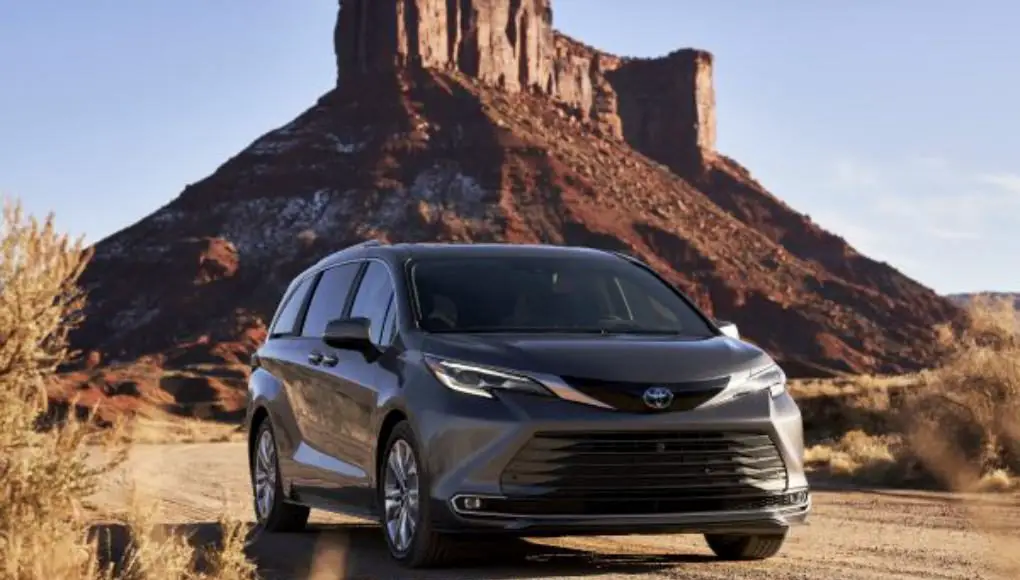Usually you want to replace less HP with more torque but it will be a tall order
When I woke up to a flurry of van news, a new Sienna was here, everything looked good, an evolution on all fronts inside, and out. Taking design inspiration from the Japanese Shinkansen bullet train, surely Toyota gave it enough oomph under the hood to justify a bold design move. I was wrong, Toyota of North America is all-in on efficiency, saddling the Sienna with a four-cylinder hybrid engine as the sole power unit. I don’t think cross shoppers will go for more MPG if it means giving up an enormous chunk of power.
Toyota has not confirmed the exact engine but those in the know already pegged this 2.5L Hybrid unit to be the A25A-FXS already doing duty in close to a dozen other Toyota vehicles including the current Rav4 hybrod, Lexus ES300h, and the Toyota Avalon and Camry Hybrid.
Where the previous Sienna made 296 HP and 263 lb-ft, this new Sienna only makes 243 HP and a yet-to-be-determined amount of torque. Extrapolating from the other 2.5L Dynamic Force engines, I find it hard to believe Toyota will exceed its predecessor’s max torque, forget about surpassing that number.
Comparing the Sienna and its chief competitors, mainly the Odyssey, both vans are nearly substitutes for each other with plenty of cargo room, seating for eight, and comparable power numbers within reach of each other. But not anymore.
Toyota is now betting on its shoppers will prioritize 33 MPG over Odyssey’s 22 MPG over better performance. In the Rav4 Hybrid owners report near close to the EPA’s estimated 41 city/38 highway, so it’s reasonable to believe that Sienna owners will hit 33 MPG combined if not exceed that mark.
Riding with one shot-gun and a just one kid out back, 243 HP might be adequate, but throw in two more kids, their stuff, and a full load of groceries and I think this new Sienna will gasp for power in the approaching highway speeds. I’ll be curious to see just how noisy it gets when new Siennas kickdown to pass. This should be clear in upcoming comparisons and even a test drive between the two.
But, consider how cheap gas is with our nation’s oil reserves bursting at the seams, cementing those low prices for the foreseeable future. If we could and without “Safer at home” orders, it’s affordable to drive around as much as we want. When Toyota was drawing up plans for the new Sienna they did not predict this swing towards cheap oil and a lockdown on non-essential travel.
In a Rav4 Hybrid with seating for five and a handful of carryons, a four-cylinder is OK but in a full-size van, I think the average van shopper will steer clear of any four-pot, however powerful paired with electric motors it is on paper.
With a new platform, redesigned exterior and interior, and a fresh engine, Toyota will not price this Sienna cheaper than its current MSRP so we can expect this new Sienna to come in around $34,000.
It begs the question, why would I spend more on a less powerful van if gas will be cheap for years to come?
I think Toyota played the right cards at the wrong time.




Because peak hp @ very high rpm is not a good indicator of how hard you get shoved forward in most every day driving situations. The question is how much and how instant is the power at low and mid range rpms. Hybrids do a good job in these situations as there is no time lost changing down 2 gears like in the V6. Also the power of the battery supplements the power of the engine at a given RPM. So at 2000 RPM the V6 puts out 90 hp maximum, the 4 cyl hybrid system puts out 100 hp (60 hp from the engine @2000 rpm and 40 hp from the battery) Yes, they’ll both rev up more if you keep the foot on the gas, but the hybrid has the initial advantage. In many driving situations you need the burst of power for just a moment. Unless you’re racing and want a short engine life, you don’t keep the car at peak power for long. Also the hybrid at full power revs at a lower RPM so less wear and stress on the engine and the bulletproof hybrid motors take a lot of the strain instead of the engine and the transmission on the V6.